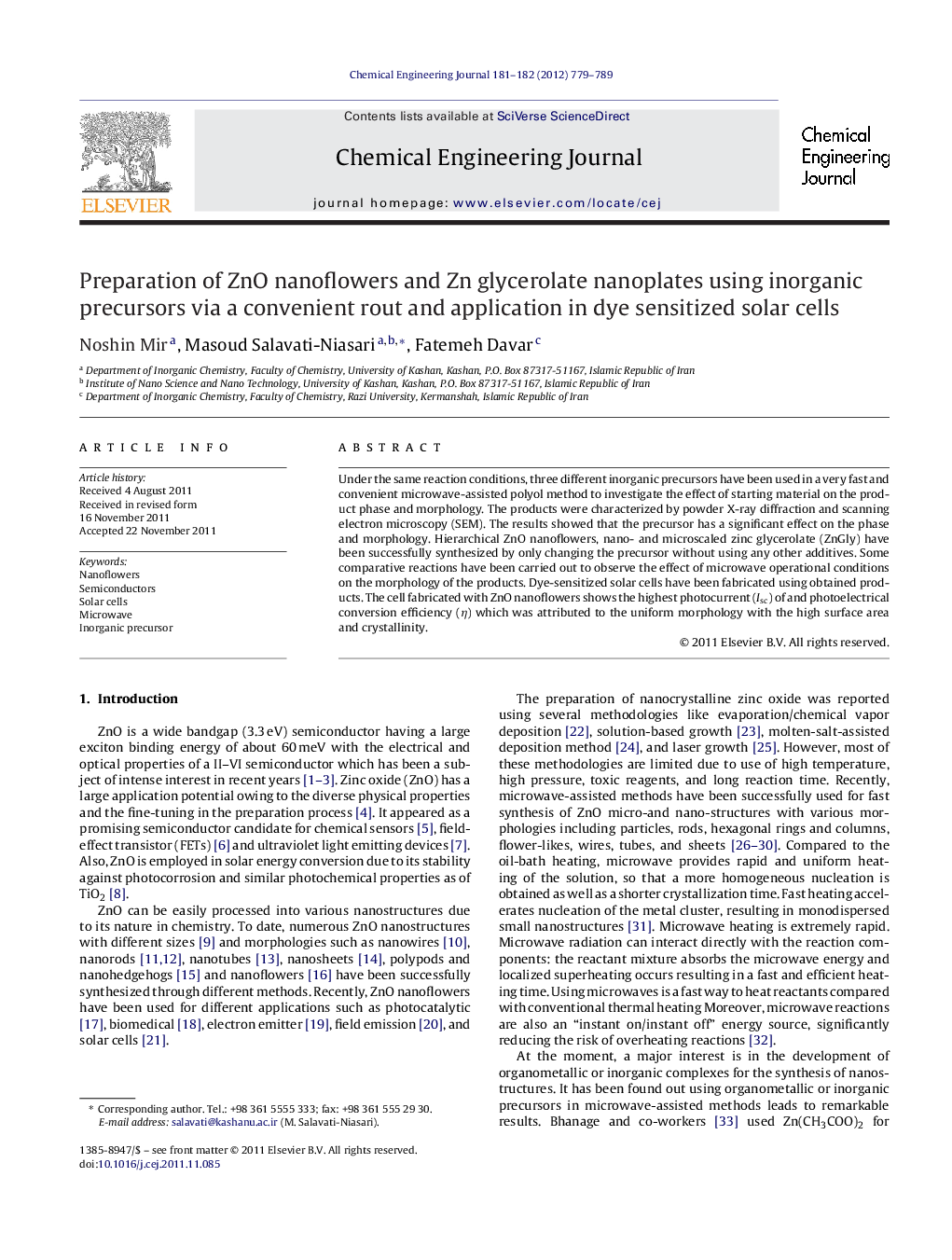| Article ID | Journal | Published Year | Pages | File Type |
|---|---|---|---|---|
| 150263 | Chemical Engineering Journal | 2012 | 11 Pages |
Under the same reaction conditions, three different inorganic precursors have been used in a very fast and convenient microwave-assisted polyol method to investigate the effect of starting material on the product phase and morphology. The products were characterized by powder X-ray diffraction and scanning electron microscopy (SEM). The results showed that the precursor has a significant effect on the phase and morphology. Hierarchical ZnO nanoflowers, nano- and microscaled zinc glycerolate (ZnGly) have been successfully synthesized by only changing the precursor without using any other additives. Some comparative reactions have been carried out to observe the effect of microwave operational conditions on the morphology of the products. Dye-sensitized solar cells have been fabricated using obtained products. The cell fabricated with ZnO nanoflowers shows the highest photocurrent (Isc) of and photoelectrical conversion efficiency (η) which was attributed to the uniform morphology with the high surface area and crystallinity.
► ZnO nanoflowers have been synthesized by microwave-assisted polyol method. ► Simple inorganic complex precursor was used. ► The dye-sensitized solar cells have been fabricated.
